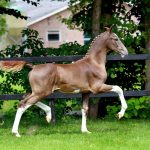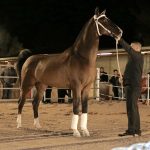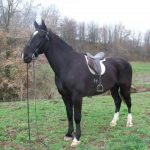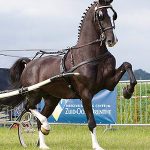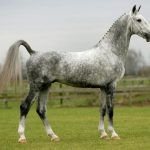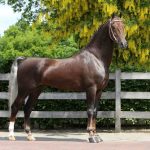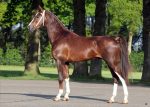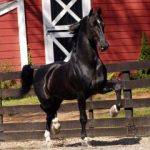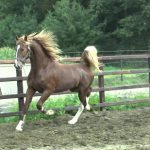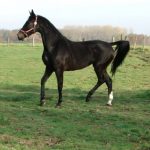Dutch Harness Horse
The Dutch Harness Horse is a breed of high-stepping, selectively-bred, elegant looking equines that developed in the Netherlands. Known for the engagement of its hindquarters and high natural action, this heritage horse is bred strictly by selective breeding in its native land so as to maintain its reputation as an elegant carriage and sports breed.
Dutch Harness Horse Pictures
- Dutch Harness Horse Dressage
- Dutch Harness Horse Foal
- Dutch Harness Horse Images
- Dutch Harness Horse Jumping
- Dutch Harness Horse Mare
- Dutch Harness Horse Photos
- Dutch Harness Horse Pictures
- Dutch Harness Horse Stallion
- Dutch Harness Horse
- Dutch Harness Horses
- KWPN Harness Horse
- Tuigpaard
Quick Information
| Other Names | Tuigpaard, KWPN Harness Horse, DHH |
| Behavioral Characteristics | Good-tempered, energetic, willing to work, docile |
| Physical Traits | The head is slim with an expressive face that tends to be narrow towards the nose tip; the neck is set high ending in long, powerful shoulders and a long back; the tail is set high |
| Coat Colors | Black, roan, chestnut, gray, bay, pinto, cream dilutions |
| Height/Size | 15 to 16.2 hands (adult) |
| Weight | 1050 pounds |
| Common Uses | Dressage, General Riding, Jumping |
| Health Problems | Normally healthy |
| Type | Sport Horse, Riding Horse, Carriage horse, Competition Horse, Show Horse, Farm Horse, Working horse |
| Blood Type | Warm |
| Bloodlines | Arabian Horse |
| Popular Traits | Multi-talented, excellent in jumping, active, durable |
| Feeding/Diet | Normal diet including hay and grains |
| Country of Origin | The Netherlands |
| Associations and Registries | American Dutch Harness Horse Association Breed Standards (Dutch) |
Video: Dutch Harness Horse at a Horse Championship
History and Development
The Dutch Harness Horse developed as a working horse since the World War II, primarily for working in farm or fields. During those days, there was an intense competition between horse owners (including the farmers) to breed the finest and the most elegant looking working and driving horses that were then known as luxury horses. The best horses were considered as the status symbol to the farmers when they would visit the towns.
With mechanization, the demand for these horses precipitated to an extent though, but the love for the animal never ceased to exist. Many owners chose to take their animals to the different show rings, while the others concentrated on developing a saddle type horse suitable for carriage driving. In the Netherlands, the KWPN(‘Koninklijk Warmbloed Paardenstamboek Nederland’, or the ‘Royal Warmblood Horse Studbook of the Netherlands’) maintains the stud book of the Dutch Harness.
In the recent time, American breeders frequently cross the Dutch Harness with the Arabian Horses with an aim to genetically develop stronger and well-defined offspring. Such breeding results in park-class horses that can handle harnesses well and can give the riders the best riding experience in different horse riding shows, since these equines are particularly saddle as well as sports horses in the US.
Interesting Facts
- With only 40 sires and less than 2,000 breeding mares remaining, the population of this horse in the Netherlands is not significant.
- On 6 April 2017, a 10-year-old white mare gave birth to a white &chestnut colt in Chesapeake, Virginia, USA.
- Branding this breed is illegal in the Netherlands; they are implanted with microchips, instead.
- A male Arabian/Dutch Harness horse, known by his barn name MD, was crowned ‘2016 Youth of the Year’ by the Arabian Horse Youth Association (AHYA), along with its owner Flora.



